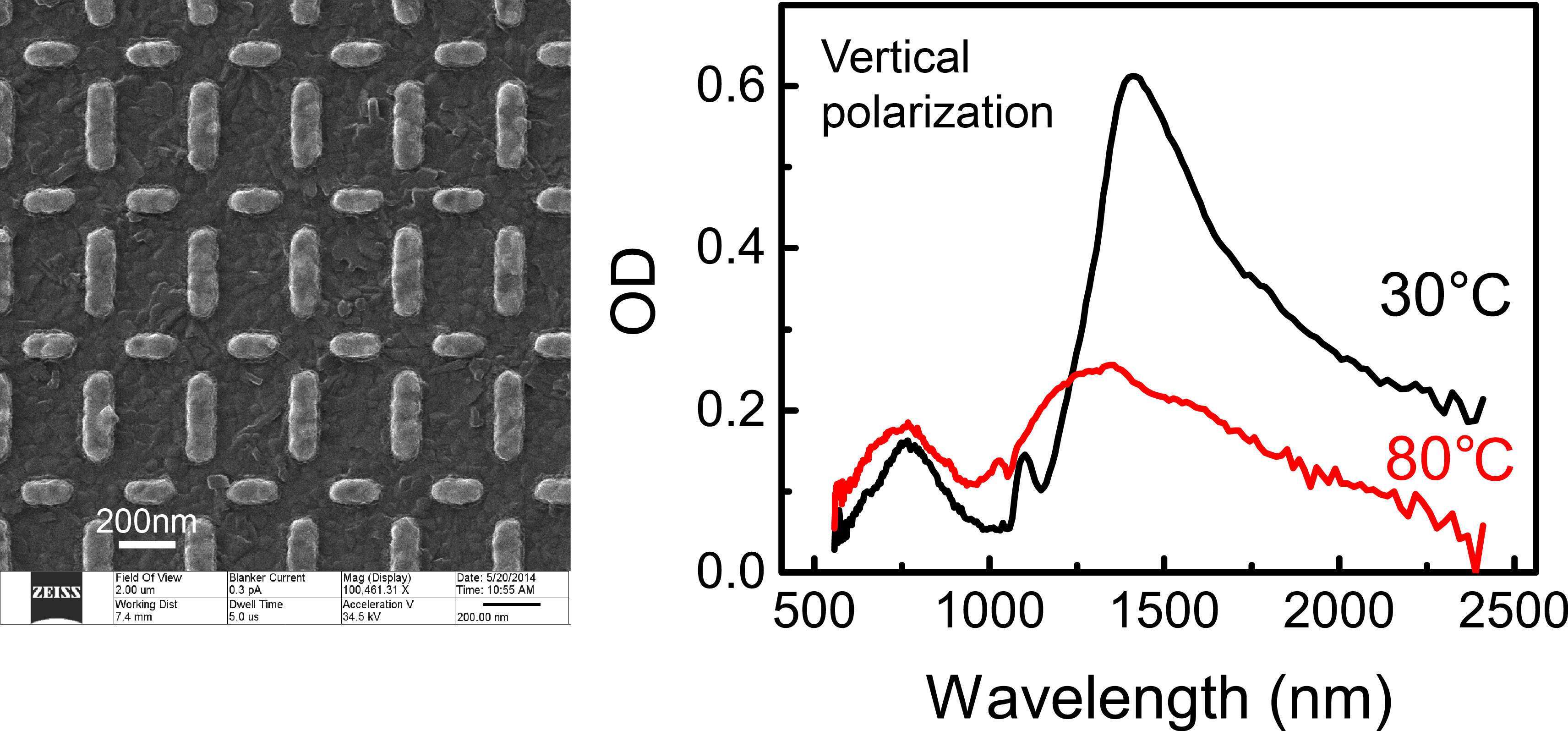
Picosecond Control of Plasmonic Nanoantennas using Hot-Spot Mediated Phase Transitions in VO2
Efficient and reversible switching of plasmonic modes at visible and near-infrared wavelengths is one of the key desirable properties for tunable devices. Phase-change materials offer technologically relevant opportunities as they can provide very large changes in the dielectric response. Compared to chalcogenide phase-change materials which offer slow, rewritable memory functionality at relatively high temperatures, vanadium oxide (VO2) provides an ultrafast, reversible phase transition at only modestly elevated temperatures around 78°C. Most studies so far have reported the effects of a global phase transition of a VO2 layer on the plasmonic response of nanoparticles and metamaterials. Here, we exploit for the first time resonant pumping and nanometer-scale plasmonic hot-spots to induce highly localized phase-changes in a plasmonic nanoantenna. Compared to earlier studies on VO2 plasmonics, we have made significant progress by optimization of the deposition process which now allows fabrication of very-high quality VO2 films with surface roughness below 10nm. Multifrequency crossed antenna arrays were fabricated on top of these films using e-beam lithography. Optical experiments show that fully reversible switching of antenna resonances with >1 million cycles per second are possible using resonant pumping schemes. It is demonstrated that the phase transition mediated by local pumping of a plasmon resonance does not influence the resonance of a perpendicular nanoantenna positioned less than 100 nm away from the modulated antenna. The nanoantenna-VO2 hybrids enable new directions in all-optical switching at picoJoule energy levels, and open up the possibility for plasmonic memristor-type devices exploiting nanoscale thermal memory.

Figure shows gold antennas fabricated on a VO2 film of high quality (left), with (right) excellent switching performance between 30°C and 80°C at telecommunication wavelengths using an external heater. All-optical picosecond control will be demonstrated in the presentation.
O.Muskens@soton.ac.uk
Powered by Eventact EMS